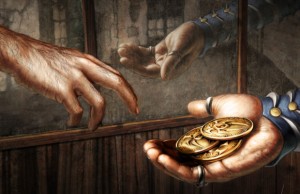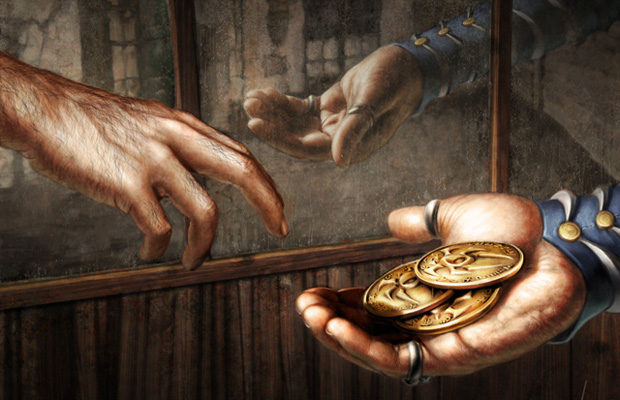Are you a Quiet Speculation member?
If not, now is a perfect time to join up! Our powerful tools, breaking-news analysis, and exclusive Discord channel will make sure you stay up to date and ahead of the curve.
Welcome back to my "Getting Started" series. If you haven't read the previous article you can check it out here. We've discussed how to find specs and when to buy them, but we haven't talked about how to actually make some money. This is the part that can be a bit intimidating as there are multiple ways to liquidate your purchases, but I promise that once you find the outlet that best serves you, it becomes fairly easy and consistent. I'm going to describe a few of the more popular ways to sell your cards.
Each process serves its own audience and you have to understand that selling on one platform might give you a better experience than another platform. If one way doesn't work for you, then it's best to explore options until you find something that does work. For example, if you're looking to sell some cards you found for a great pre-order price before that card spiked (Seasoned Pyromancer I'm looking at you), eBay might one of the better platforms to sell on. I'll describe some pros and cons to each platform, but keep in mind these will mostly be from my own experiences. As always, I urge you to do some research before selling.
eBay
Let's start with one of the more obvious choices - eBay. This is a fantastic platform to sell on if you are looking to get rid of large collections (bulk mostly), pre-sale or pre-orders for upcoming sets, random cards that don't seem to find traction on other platforms, or something that you want to set and forget (for a few days). eBay is an auction site, but you can choose to sell at a strict price as well. When you start the initial process of selling on eBay it will ask you to enter some keywords or a UPC number. It's better to be more descriptive than not when you are titling your post. "MTG Gideon Jura" is not nearly as good as "Magic The Gathering - Gideon Jura - M12 [Foil] - LP x1".
After titling it, eBay will ask you if what you're selling is similar to other items - feel free to chose one if you wish but I personally like making my own posts. Give as much card information to the site as you can (Planeswalker, Foil, New/Used, Mythic Rare, etc). Next, upload a picture of the exact lot you are selling, keep in mind if you are selling a playset, a collection, or multiple cards, then it is good to make sure all of the cards are pictured. In the description, it is best to give the card information again, shipping information, and any other relevant details. eBay will give you a suggested bid and shipping but you can change these to whatever you wish.
You can also choose to make the listing an auction with a starting bid (and a reserve to be met if you want), a buy it now option for a strict price, and a best offer. Let's say we are selling a Gideon foil from Magic 2012. We could probably list it for a seven-day auction starting at $1 bid to meet a reserve of at least $14, a buy it now option of $18, and a best offer option. This way, people can bid on it until the seven days are up, and if the reserve isn't met you can have the option of relisting it. If someone offers you $13 and you really feel like you want that money, then you can take the offer. Let's say you get someone to buy the card for $18 once the auction ends. What is your actual profit? For the basic seller, eBay has two fees - the insertion fee and the final value fee. An insertion fee is what they charge you to make a listing and they offer you 50 free insertions a month.
If you're just starting out or don't have the intention to use eBay that much, this is a great offer. Final value fees are based on how much your item sells for and you are charged at the end of the sale. Their site says that most categories are a 10-12% fee after the sale. As well, you must consider shipping costs (unless you use a plain white envelope) that may not be paid by the buyer. Sometimes, it's more competitive to offer free shipping. For this example, we'll say we offered free shipping and we want to use a bubble mailer to send the card a few states away. You can find bubble mailers in large quantities fairly cheap on Amazon or eBay. Let's say we bought 50 for $7.99; that means each mailer is roughly $0.15. We bought Gideon at $12, it sold for $17.50, eBay takes 10% so we're down to $15.75, shipping is $2.60 bringing us to $13.15. Your profit on that single card is only $1.15.
Not all cards will give you the same scenario. Let's look at the same card on Facebook.
There are plenty of places to sell on Facebook (including Marketplace), you just have to look for them. If you do a search for "MTG buy/sell/trade" you'll find a plethora of pages. Let's say we joined a "Sick Deals" page and we are looking to sell the Gideon. Most "Sick Deals" pages require you to post at 10% below TCGplayer or eBay lowest listings. The lowest listed foil is about $9, but the lowest listed as NM foil is $17.88. If we make a post (following the same concepts as our eBay post) simply asking "10% below TCG low" then we will most likely get an offer for about $15 shipped in a PWE.
Considering Facebook has no fees (but no protection also) and this is one of the faster ways to sell you cards, our profit now goes to just under $3 (when you include the price of envelopes and stamps). It's as easy as that! Just make sure that you are respectful about your posts, and you adhere to the rules of whichever page you post - some of them require pictures with your name and date, some require a minimum amount, etc. Most social media sites follow the same path as Facebook when it comes to sales. Selling on Twitter is easier with hashtags (i.e. #MTGBuySell), Instagram also uses hashtags and requires a bit of traction with followers, Discord is best with large groups (such as the QS Discord), and apps such as LetGo require constant reposting and checking.

Friendly LGS
Of course, you could always buylist your cards. Taking them to your local game store is a great way to support your community, but you have to understand that buylisting sometimes doesn't result in a profit. The Gideon we bought at $12 isn't listed on CardKingdom's buylist, is $10 on CoolStuffInc, $9.80 on TrollAndToad, and is $16 at ABUGames but only for store credit (cash is under $7). This also means your LGS will probably buy it back for about $8-11 in store credit.
If you're going to buylist cards I would recommend only doing it if you know you are going to make a profit. Some stores give you a bit more in store credit because they want you to shop at their store, but understand that sometimes prices are a bit higher as well. We might be able to buylist our Gideon at ABU for $16 in-store credit, but they also sell the same card for $22.99 NM. Understanding store credit with the secondary market is a topic for a whole different article, though.
I hope this article gives you a bit more information about how to sell your cards, should you chose to do so. I honestly think there is an art to MTG Finance, and it might take some time and practice to get it down. However, you always have friends to help you here at Quiet Speculation! Feel free to find me on Twitter (@DVplaysMTG), the QS Discord, or comment here on the article if you have any questions - I'd be glad to answer anything I can. Happy selling folks!




